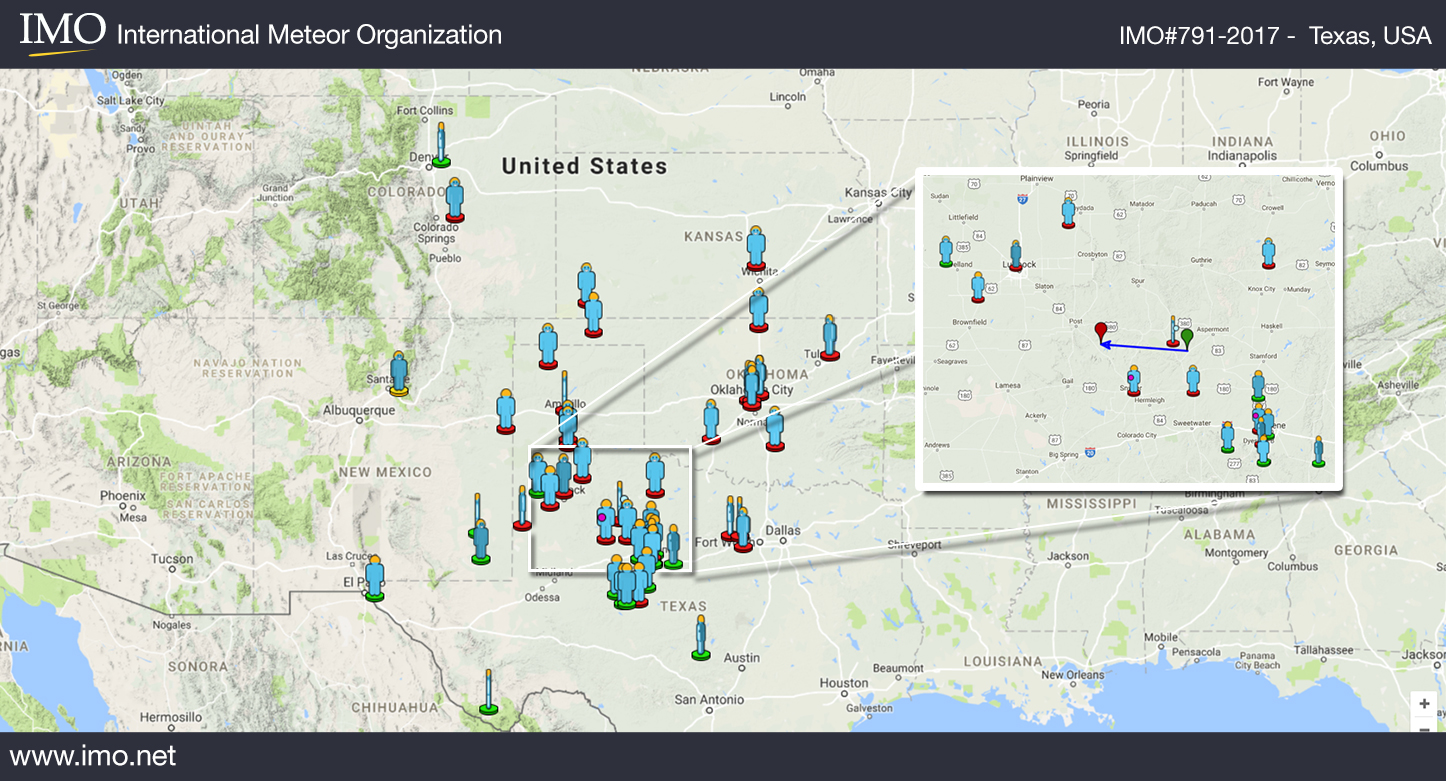On February 27th, 2017, a very bright fireball was observed, filmed, and reported to the IMO/AMS via the Fireball Report Form. Videos of the event shows it lasted more than 6 seconds, and was easily visible from city center, despite the light pollution. Some observers also noted that they could see for a short moment like in daytime, which shows the meteor must have been brighter than mag. -12. But not only did this fireball lit up the texan skies (it was also observed from Colorado, New Mexico, Kansas and Oklahoma), but it also produce a loud noise that was widely heard, and alerted people, who called the police and fire stations, thinking it could be an accidental explosion.
Actually, videos and witness shows that was not. The real origin of the whole phenomenon is a large (dozens of centimeters wide) piece of interplanetary rock, that entered the Earth atmosphere at around 02h 55min UT (08:55 pm CST), on February 27th night. And the perceived sound was created when the meteoroid started entering the lowest parts of the atmosphere.
Automatic visual reports analysis shows the fireball occured above Northern Texas, with a East to West trajectory (azimuth ~ 274°). It started becoming luminous 25 km South-West from Aspermont (Stonewall County), and was last observed when it was 25 km South-East from Post (Garza County). By prolongating this apparent trtajectory, the impact point would be located slightly East of the border between Lynn and Terry Counties.





 You saw something bright and fast? Like a huge shooting star? Report it: it may be a fireball.
You saw something bright and fast? Like a huge shooting star? Report it: it may be a fireball.  You counted meteors last night? Share your results with us!
You counted meteors last night? Share your results with us!  You took a photo of a meteor or fireball? You have a screenshot of your cam? Share it with us!
You took a photo of a meteor or fireball? You have a screenshot of your cam? Share it with us!  You caught a meteor or fireball on video? Share your video with us!
You caught a meteor or fireball on video? Share your video with us!